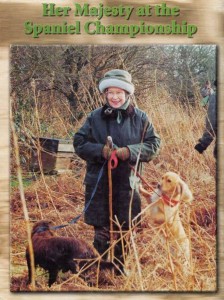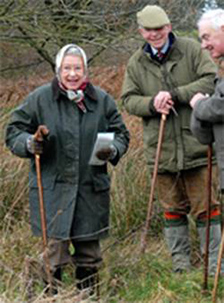The Road to Steadying
A spaniel’s job falls into three categories: Hunting, steadiness and retrieving. Even though this is the sequence in which a spaniel naturally performs, it is not the order in which the early education of pup is conducted.
In training a young dog this order is reversed: retrieving, steadiness, then hunting.
We believe a pup should be kept in the dark as to the power of a bird for as long as possible. Make sure all of your obedience is solidly instilled before the distraction of game is introduced. Sadly, this was a lesson we learned the hard way.
This does not mean that with a very young pup you should not take every opportunity to let him explore his world, and get as much scent as possible in his nose. However, as pup grows older, avoid places where he can chase game, also take care not to allow much free running. Make sure you have instilled a solid recall, so that in the event your dog puts up game you can call him off.
This month we will outline the steps we take to steady a dog.
Yard Work
I. Retrieving – on bare ground
A) establish a retrieve to hand: bumper, dead bird, harnessed live bird, clip wing.
B) stays to a thrown object: bumper, dead bird, clip wing , flyaways.
C) marking drills: bare ground to light cover.
II. Conditioning a quick response to:
A) whistle and verbal commands
B) shot (blank pistol)
C) thrown object
III. Start directional retrieving
A) running lines
B) overs – incorporate turn whistle
C) backs
IV. Start retrieving exercises in low cover.
V. Develop a quick recall to whistle.
VI. Controlled walk and heeling.
Field Work
Introduce field work after your yard work is well established.
I. Develop a quartering pattern.
A) sharp, quick turns to the whistle
B) establish a good gun range pattern
C) always start your quartering exercises into the wind.
II. Planted scented bumpers (feathered if possible)
A) plant a few bumpers in the field to find while quartering
(Note – not too many, as to break up a quartering pattern.)
III. Stop to hup whistle while quartering.
A) when pup is hupped, then throw a bumper to retrieve.
IV. Hup to shot while quartering.
A) when hupped, throw bumper to retrieve.
Note: Do not let pup have every retrieve. Mix it up, two out of three retrieves, then one out of three. Really work on control.
V. Gradually reverse order. While quartering, as dog turns toward you, throw a bumper first, then shoot. If pup breaks to thrown bumper while quartering, go back to your yard work
drills.
Introducing Birds
I. Plant a dead bird to find in place of the bumper while quartering.
II. While quartering shoot first then throw a dead bird. Always make sure that the dog has hupped first before throwing the bird.
III. Reverse order; thrown dead bird, then shot. Remember not to let pup have every retrieve. Make him stay while you go out and pick up the bird.
IV. Do the same above drills, but now throw up a live bird (pigeon). As the bird flies away incorporate a ‘no bird, gone away’ command. Let the pup sit and mark the flight of
The bird before releasing him.
V. If all has gone well and pup has remained steady to fly- aways give him a shot bird that has been thrown, not flushed.
VI. Last, start planting birds and let pup flush birds he hunts up. Remember to give a lot of flyaways. Don’t let him get every bird he flushes. Always add a shot and use your ‘gone away’ command on flyaways.
Continue to do all your early quartering into the wind.
We personally do not use a check cord when we start quartering exercises. We spend a long time establishing a good work ethic in our yard work before we start any ground work.
If at any time trouble develops (and it will) in any area of the above steps, back up and reinforce your steadying drills. Remember, it is more about conditioning than training.
Make sure you always use positive motivational methods. Even the softest of pups will build confidence and drive with this system of training.
In the months to follow we will offer different drills and games that we have found to be beneficial and fun methods to help steady your dog.
By Bruce McClarin & Debbie Curtice



